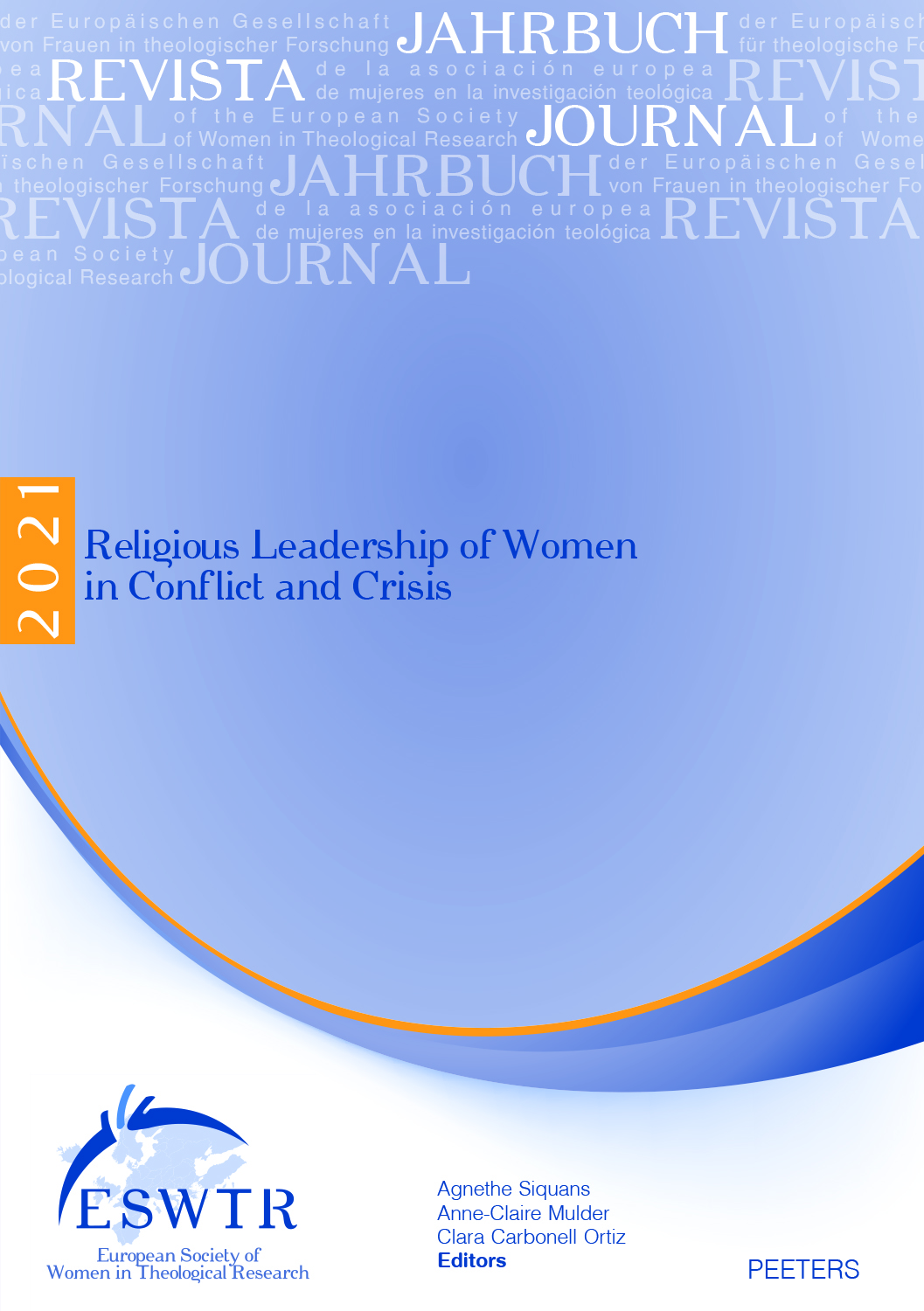 previous article in this issue previous article in this issue | next article in this issue  |

Preview first page |
Document Details : Title: Every Son's Mother Subtitle: Human Rights Mariology Author(s): VOLKOVA, Elena Journal: Journal of the European Society of Women in Theological Research Volume: 24 Date: 2016 Pages: 203-214 DOI: 10.2143/ESWTR.24.0.3170035 Abstract : In post-Soviet Russia, mothers’ NGOs and individual women activists transformed the traditional religious idea of the feminine and maternal. They introduced a civil type of the 'responsible motherhood and sisterhood' which shaped a new image of Mother of God, namely, the Human-Rights Mary: the Mary that the Pussy Rioters prayed to in 2012. Religious images such as the Orthodox iconography of Theotokos and the infant Jesus, Saint George killing the Dragon, and a 'Church on Blood' tradition, as well as connotations of the biblical stories of Herod and the Massacre of Innocents, the Sanhedrin Trial of Jesus, and Jesus in Jail, present a metaphorical reception of numerous political conflicts in and around Russia. These include the Beslan school siege, military hazing, lack of justice, political repressions, the invasion of Ukraine, casualties of the undeclared war, and many others. This 'clash of Maries' points to a number of binary oppositions – those of a civil religion of human rights vs. the new authoritarian political religion of the Post-Communist Orthodoxy, ecumenism vs. religious nationalism, pacifism vs. militarism, democracy vs. dictatorship, and nonconformity vs. collaboration. Moderne Organisationen von Müttern und individuelle Aktivistinnen veränderten die traditionelle religiöse Idee von Femininität und Mutterschaft in postsowjetischen Russland. Sie haben ein säkulares bzw. kulturpolitisches Paradigma der verantwortlichen Mutter- und Schwesternschaft eingeführt. Daraus hat sich ein neues Image der Gottesgebärerin Maria entwickelt, zu der z.B. die Pussy Riot-Frauen 2012 gebetet haben. Religiose Bilder und wie z. B. orthodoxe Ikonographie der Mutter Gottes mit dem Christkind, der Heiliger Georg der Drachentöter, und Konnotationen der biblischen Geschichten über Herodes und das Massaker der Unschuldigen, über den Prozess Jesu und Jesu im Gefängnis widerspiegeln in dieser Interpretation politische Konflikte in und um Russland wie z.B. die Belagerung der Schule in Beslan Schikanen in den Streitkräften, politische Repressionen, der Einmarsch in die Ukraine usw. Dieser 'Zusammenstoß von Marien' weißt auf einige Oppositionen hin – eine eine zivile Religion der Menschenrechte steht der neuen autoritären politischen Religion der postkommunistischen Orthodoxie gegenüber, der Ökumenismus dem religiösen Nationalismus, Pazifismus dem Militarismus, Demokratie der Diktatur und schließlich steht Nonkonformismus einem so genannten 'Kollaborationismus'. En Rusia del período post-soviético la ONG de las madres y unas mujeres activistas transformaron la idea religiosa tradicional de lo femenino y lo maternal. Ellas introdujeron un entendimiento civil de la 'maternidad y hermandad responsable' que dió forma a una nueva imagen de Madre de Dios – una María de los Derechos Humanos – a quien invocaron las de Pussy Riot en 2012. Las imágenes y connotaciones religiosas de la iconografía ortodoxa de la Madre de Dios y Jesús infante; San Jorge matando al Dragón, la tradición de la 'iglesia a base de la sangre', tanto como las historias bíblicas de Herodes y la Masacre de los Inocentes, el Juicio de Jesús y Jesús en la Cárcel, presentan la recepción metafórica de numerosos conflictos políticos dentro y fuera de Rusia: la toma de la escuela en Beslán, 'abuelismo' militar, falta de justicia, represión política, invasión en Ucrania, víctimas de la guerra no declarada, etc. Este 'choque de Marías' indica una serie de oposiciones binarias: una nueva religión política autoritaria de la Ortodoxia post-comunista y una religión civil de los derechos humanos, el ecumenismo y nacionalismo religioso, pacifismo y militarismo, democracia y dictadura, inconformismo y colaboración. |
 |


